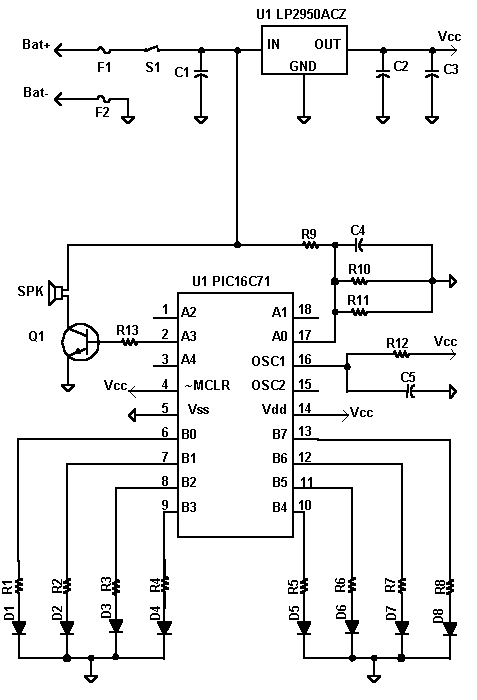

Initialize serial and wait for port to open: Int analogInPin = A0 // Analog input pinįloat calibration = 0.36 // Check Battery voltage using multimeter & add/subtract the value These functions are generated with the Thing and added at the end of this sketch. Which are called when their values are changed from the Dashboard. Variables which are marked as READ/WRITE in the Cloud Thing will also have functions The following variables are automatically generated and updated when changes are made to the Thing Sketch generated by the Arduino IoT Cloud Thing "Battery Monitoring"
BATTERY MONITOR CIRCUITS CODE
Now, simply compile and upload the code to your NodeMCU board. Simply, copy and paste the code provided below. Go back to the Things Tab then click on the sketch. It has a built-in WiFi chip that helps to connect to your wifi network and uploads data to the cloud server. So, I choose a cheap and widely used NodeMCU ESP8266 board. A microcontroller is required to send those values to the IoT Platform. We are going to design a simple system to monitor battery voltage and battery percentage along with charging and discharging status in Arduino IoT Cloud.

ESP32 based Patient Health Monitoring System.IoT Based Bidirectional Visitor Counter using ESP8266 & Blynk.Interfacing PIR Sensor with ESP8266 and EasyIoT.IoT Based Pulse Oximeter Using ESP8266 & Blynk.You can get batteries cut-off voltage of a lithium-ion battery between 2.5V-3V. The battery that I am using in this project has a discharge cut-off voltage of 2.8V which is common. You see the manufacturer datasheet, for your battery cut-off voltage because it varies depending on the type of battery that you are using. The maximum voltage is 4.2☐.5 when the battery is fully charged. Most of the Lithium-Ion batteries come with a nominal voltage of 3.7V. For smooth charging and short-circuit protection, etc. Some batteries come with a BMS circuit for over-voltage protection. I have collected a few Lithium-Ion batteries that I have been using in most of my IoT-based Projects. This battery has a high energy density, no memory effect, and low self-discharge. It uses an intercalated lithium compound at the positive electrode and graphite at the negative electrode. In a Li-ion battery, the ions move from the negative electrode to the positive electrode while discharging, and vice v ersa when charging. You can purchase all the components online from the Amazon affiliate links provided below. You will need the following components for the IoT Based Battery Monitoring System Project. The IoT Cloud Dashboard will display the battery voltage along with the battery percentage in both the charging and discharging conditions. In this IoT-based Battery Monitoring System, we will use the NodeMCU ESP8266 board to send the battery status data to the Arduino IoT cloud. The user can check the battery status on their smartphones or Computer Dashboard from anywhere in the world. now due to the use of the Internet of Things, we can directly notify the users remotely. But in this project, we have used the Internet of Things( IoT) technology which can directly notify the users remotely. The BMS can only monitor the condition of the battery and alarm the user through a battery indicator. To ensure the proper safety and handling of Lithium-Ion or Lithium Polymer batteries. Actually, BMS monitors all the properties of the battery like the voltage, current, temperature & auto cut-off system. Most of the electrical/electronics devices have a Battery Management System ( BMS). We all know that an improper system of charging and discharging may lead to battery damage or system failure. Hence, we need to monitor the voltage level of the battery. Therefore, this system is useful for monitoring battery charging /discharging status remotely.Īs we know, the battery in any system or device is the main component because it powers the entire system. Using this system we can monitor battery voltage and percentage from anywhere in the world. In this project, we will build a Battery Status Monitoring System using ESP8266 & Arduino IoT Cloud. Overview: IoT Based Battery Monitoring System using ESP8266 Video Tutorial & Guide: IoT Based Battery Monitoring System.Demonstration: Battery Monitoring System using ESP8266 on Arduino IoT Cloud.Project PCB Gerber File & PCB Ordering Online.Overview: IoT Based Battery Monitoring System using ESP8266.


 0 kommentar(er)
0 kommentar(er)
